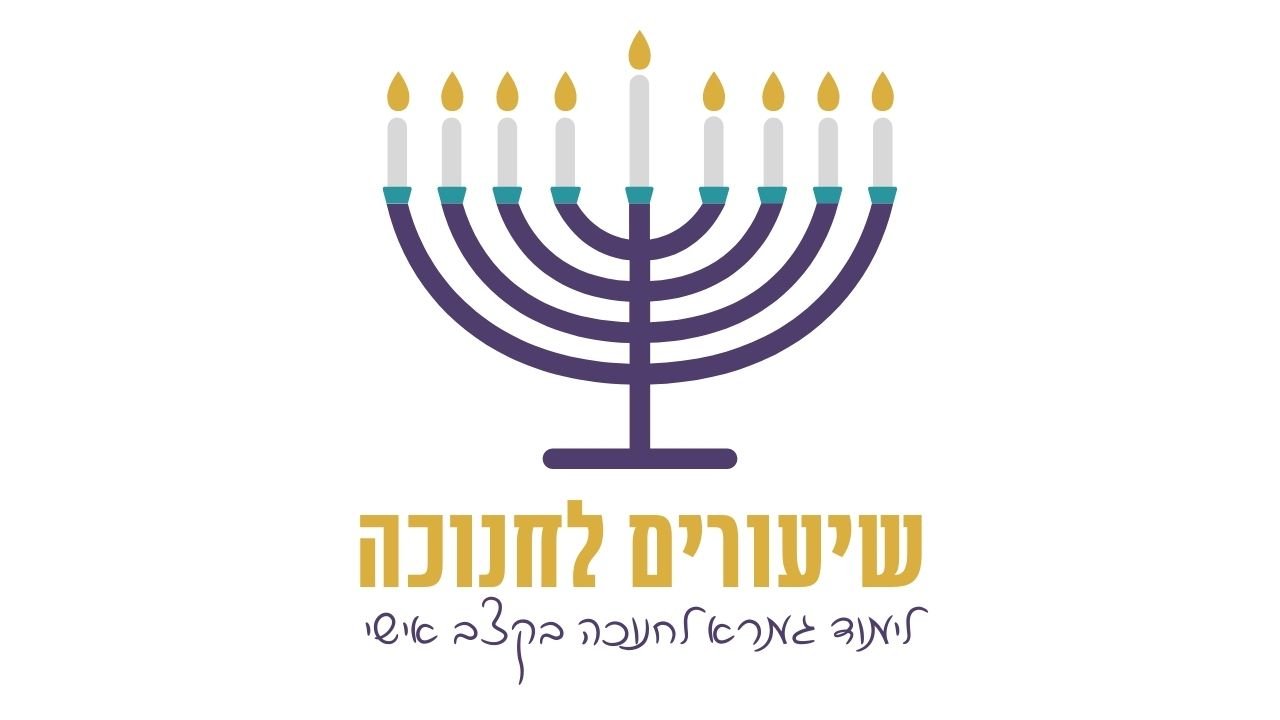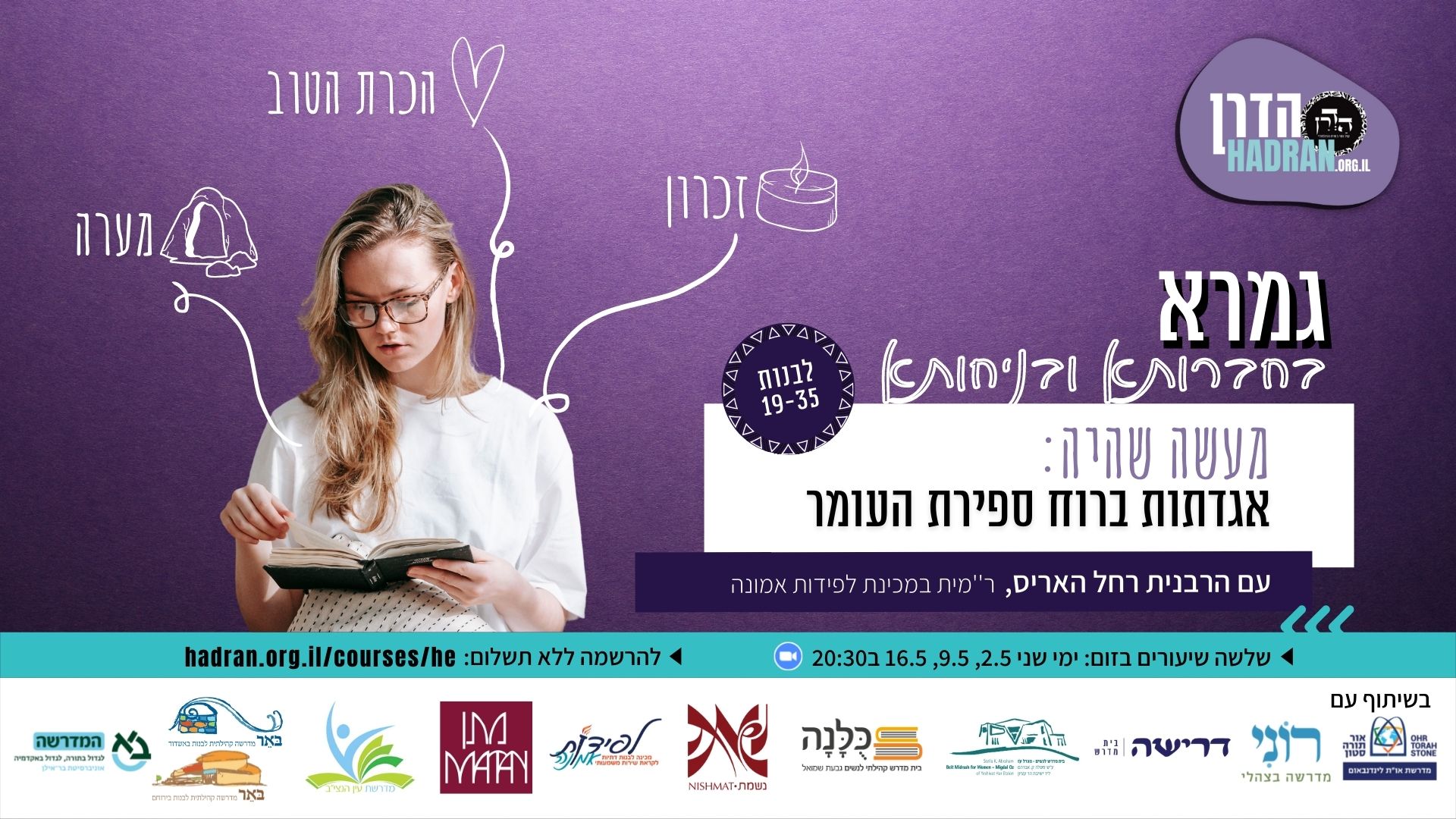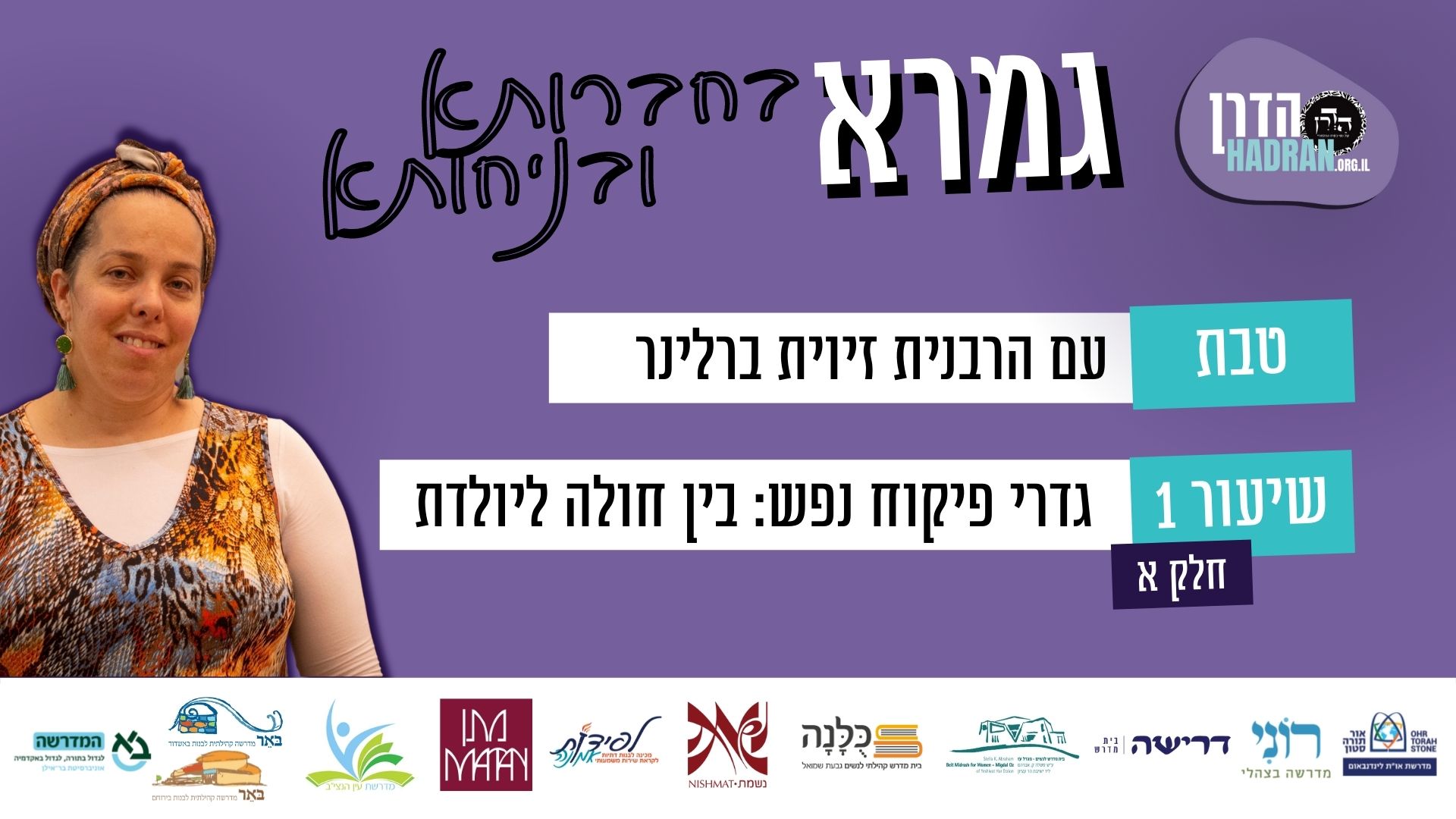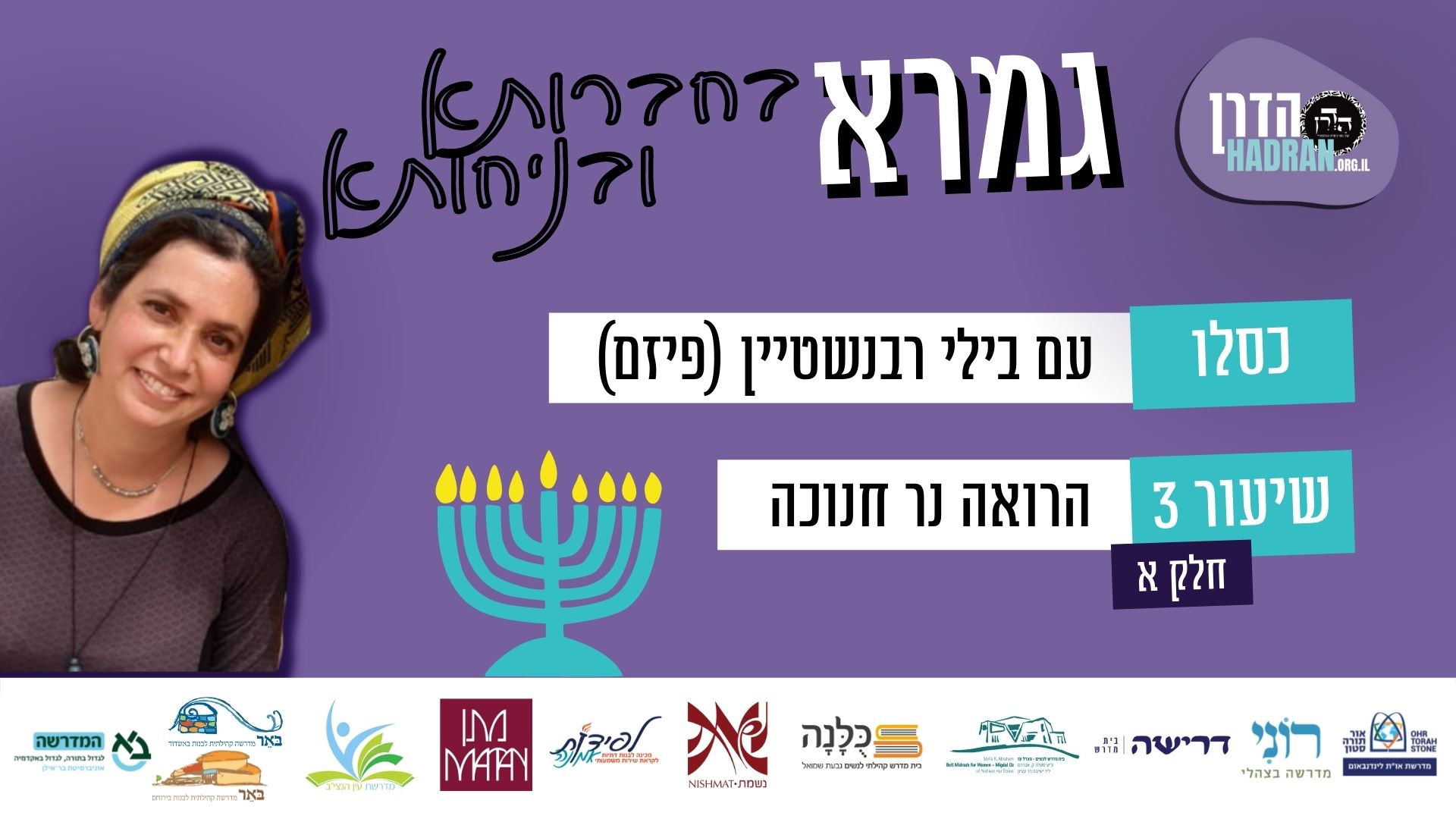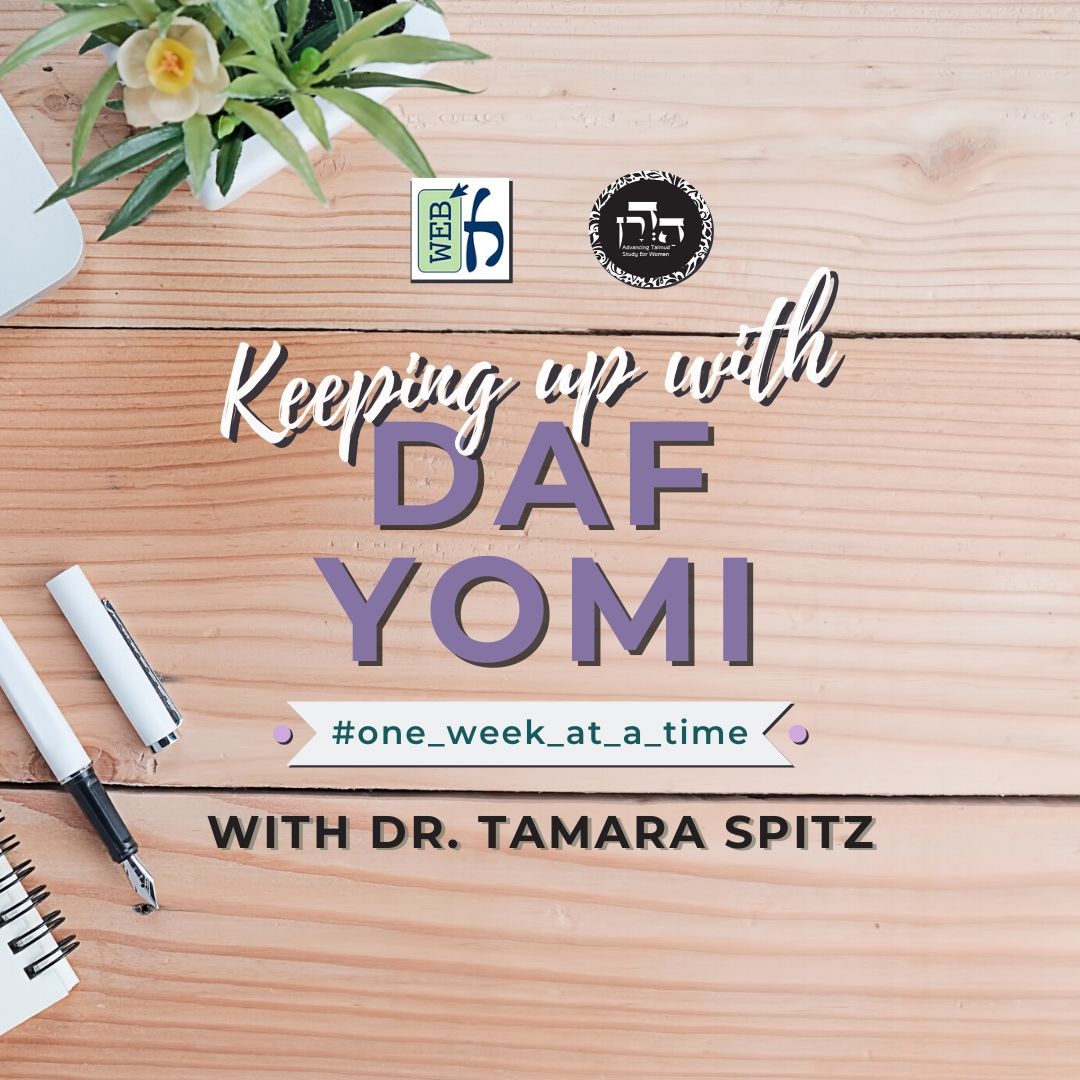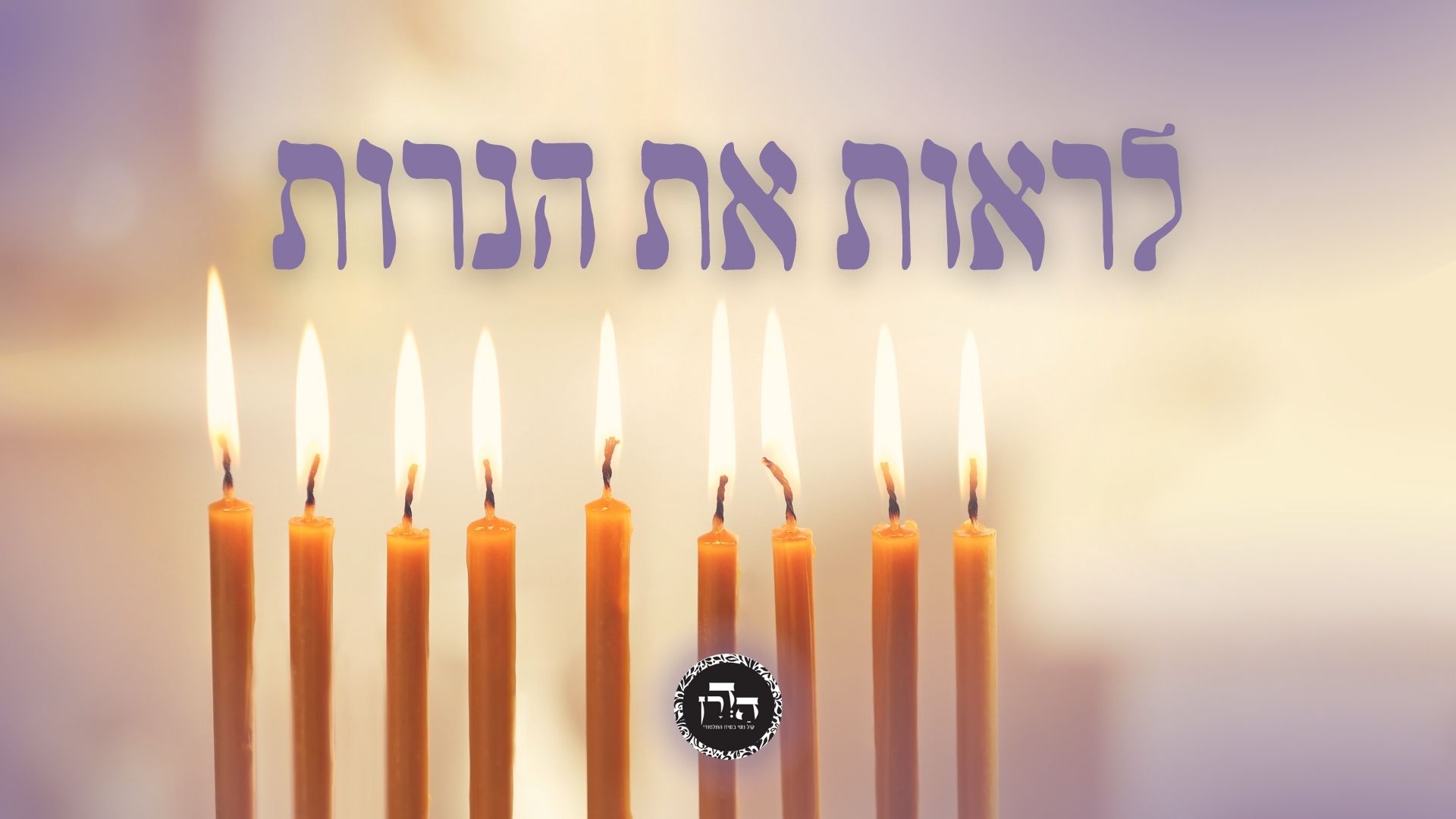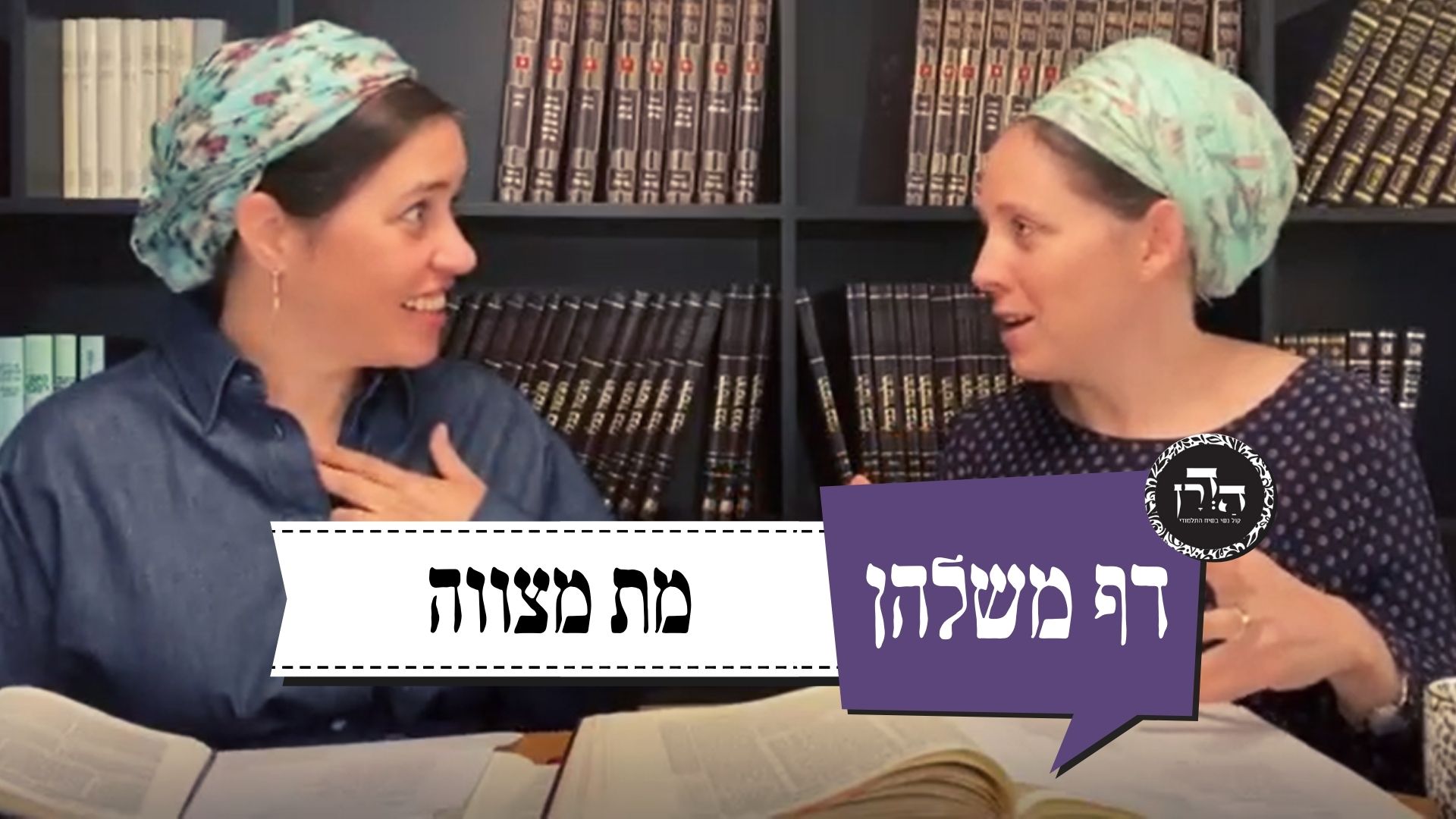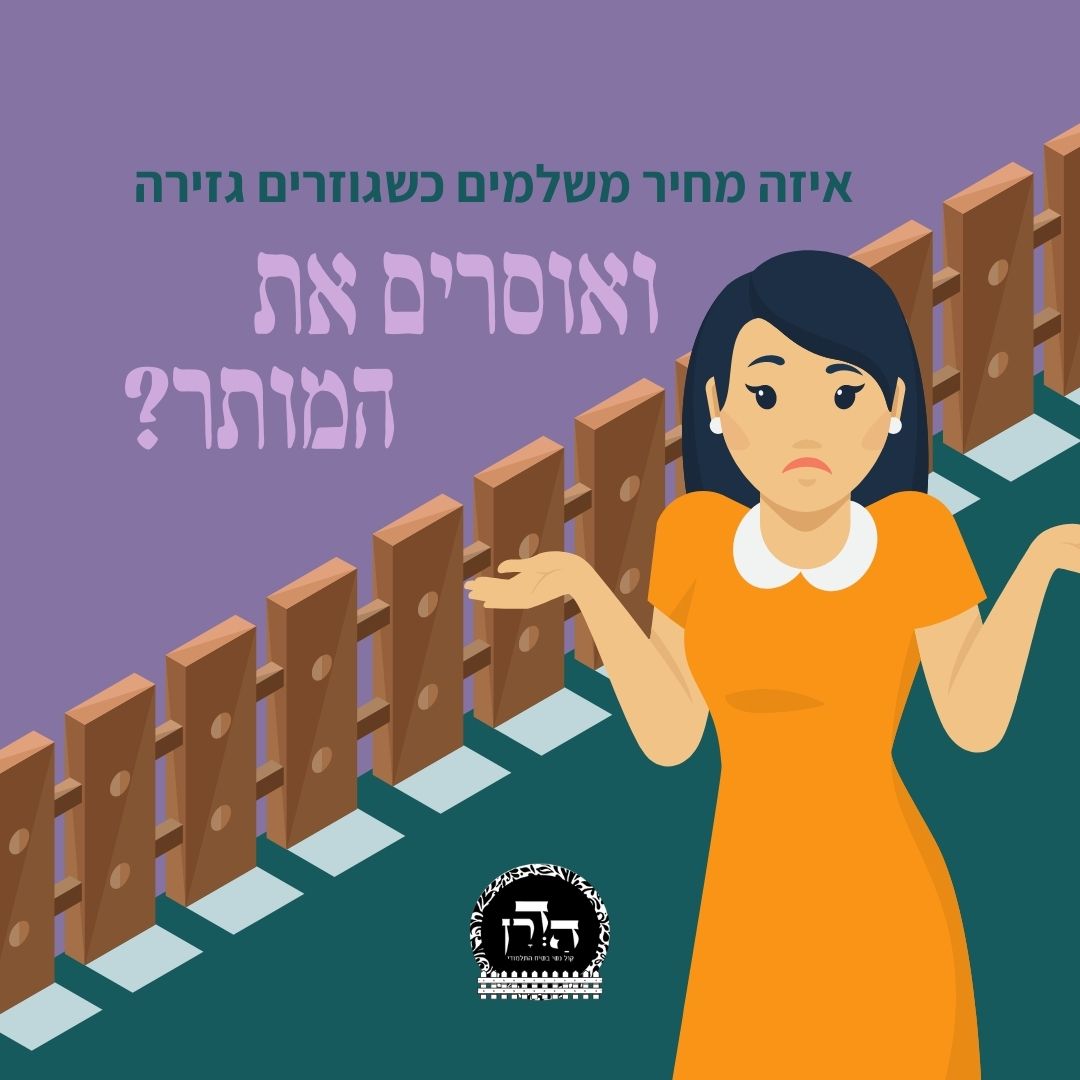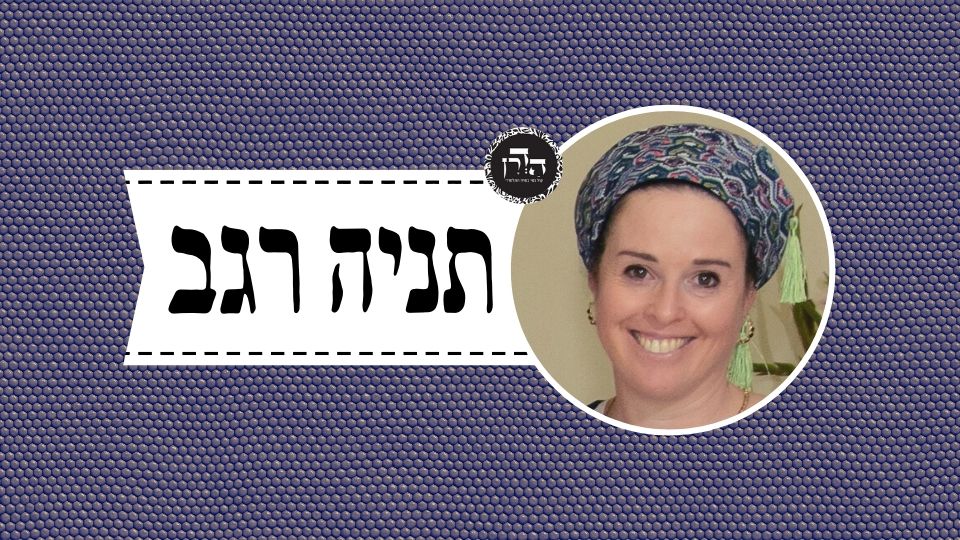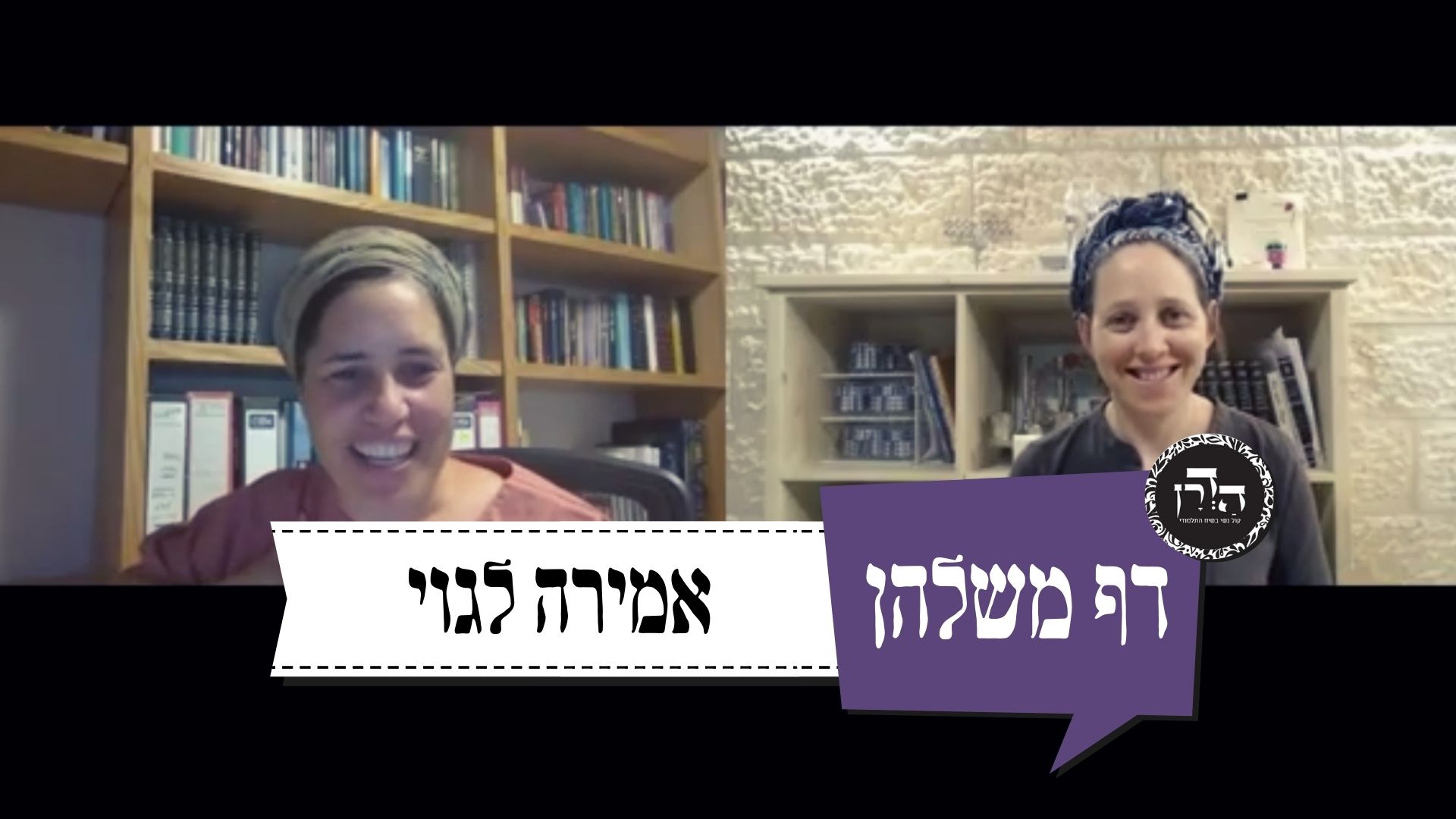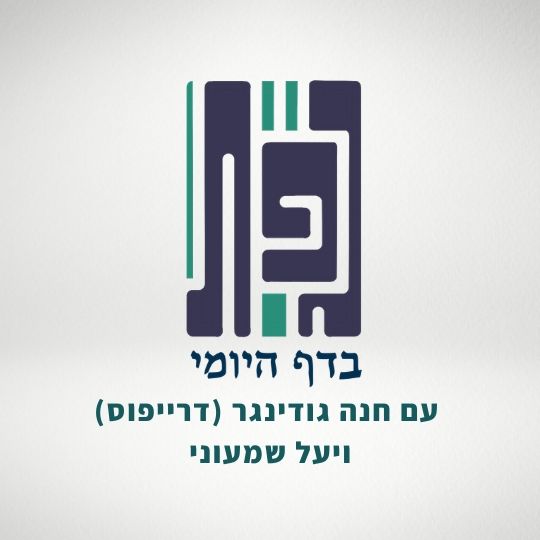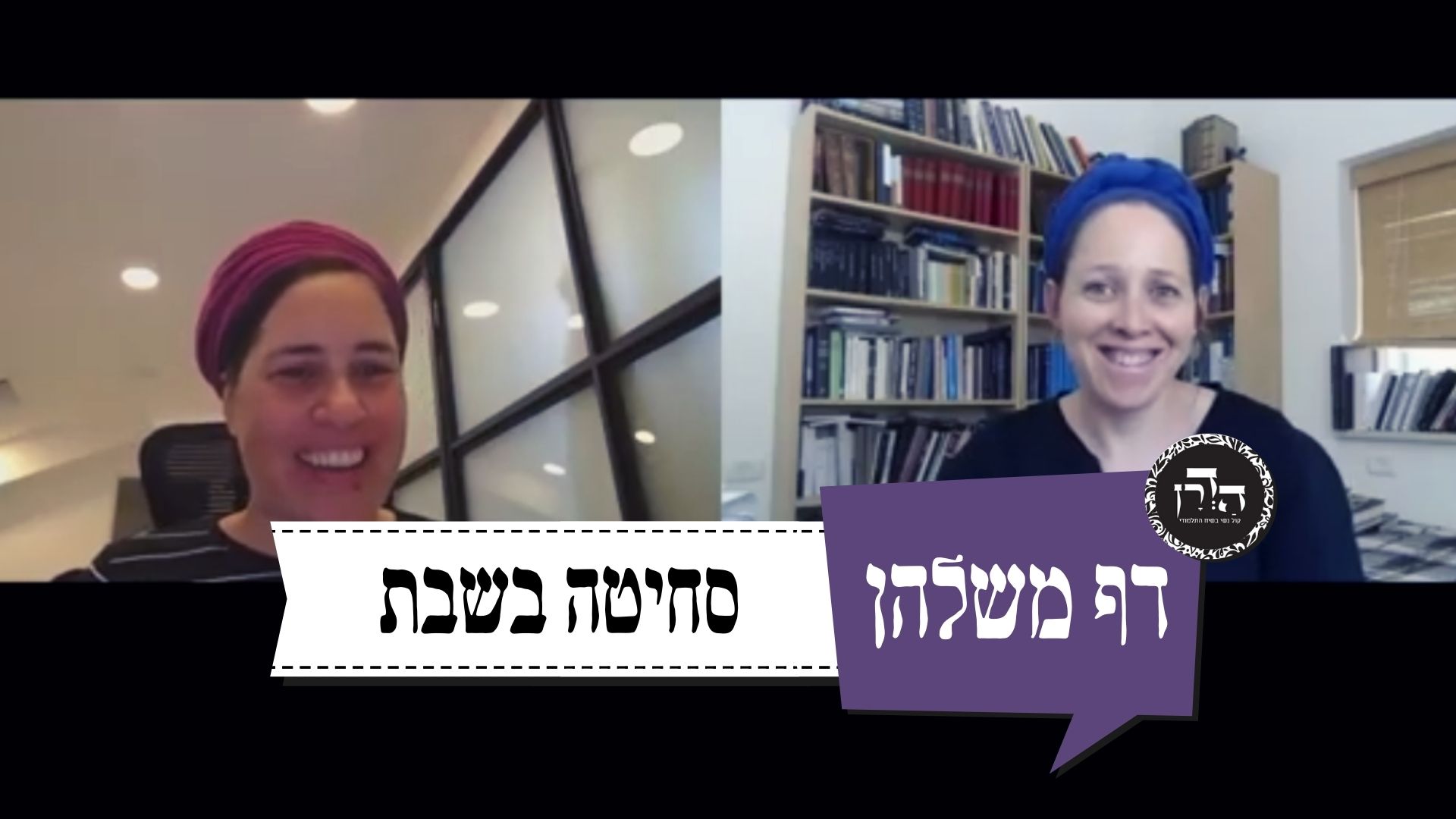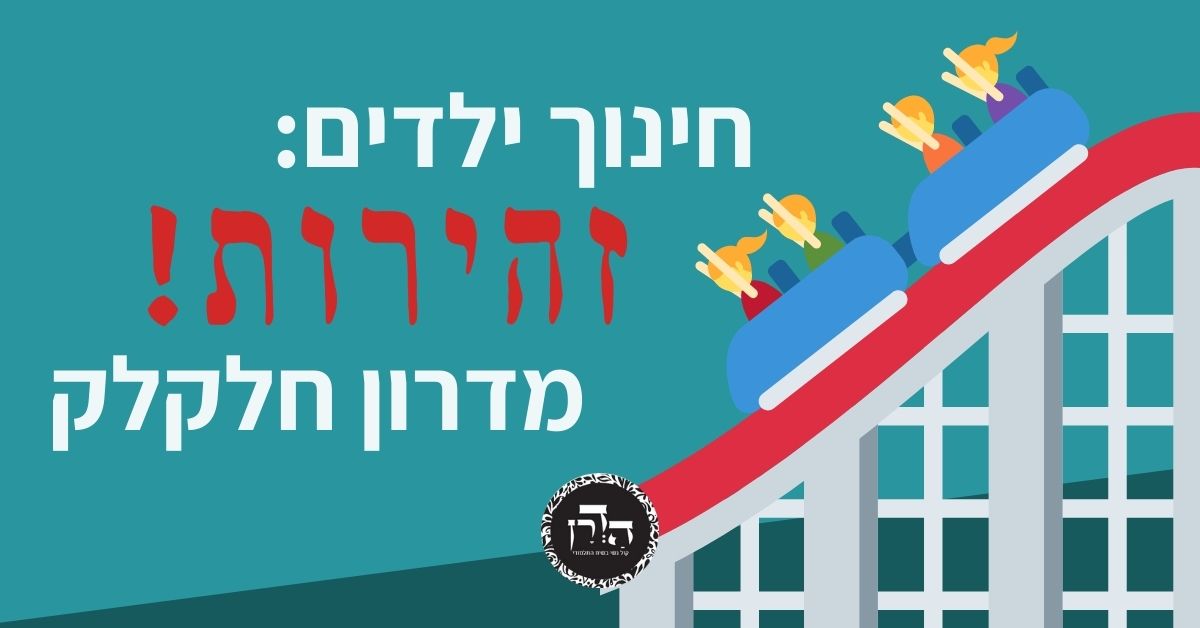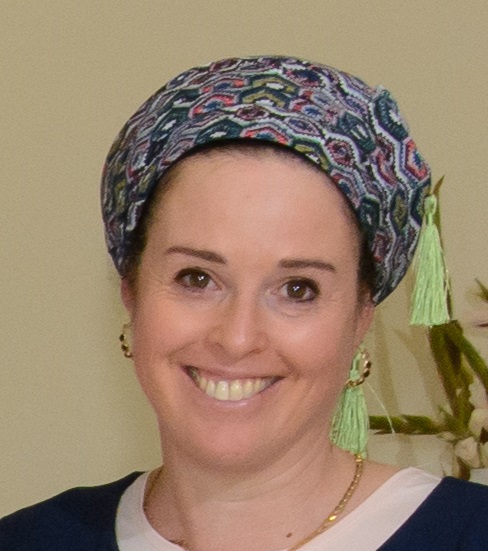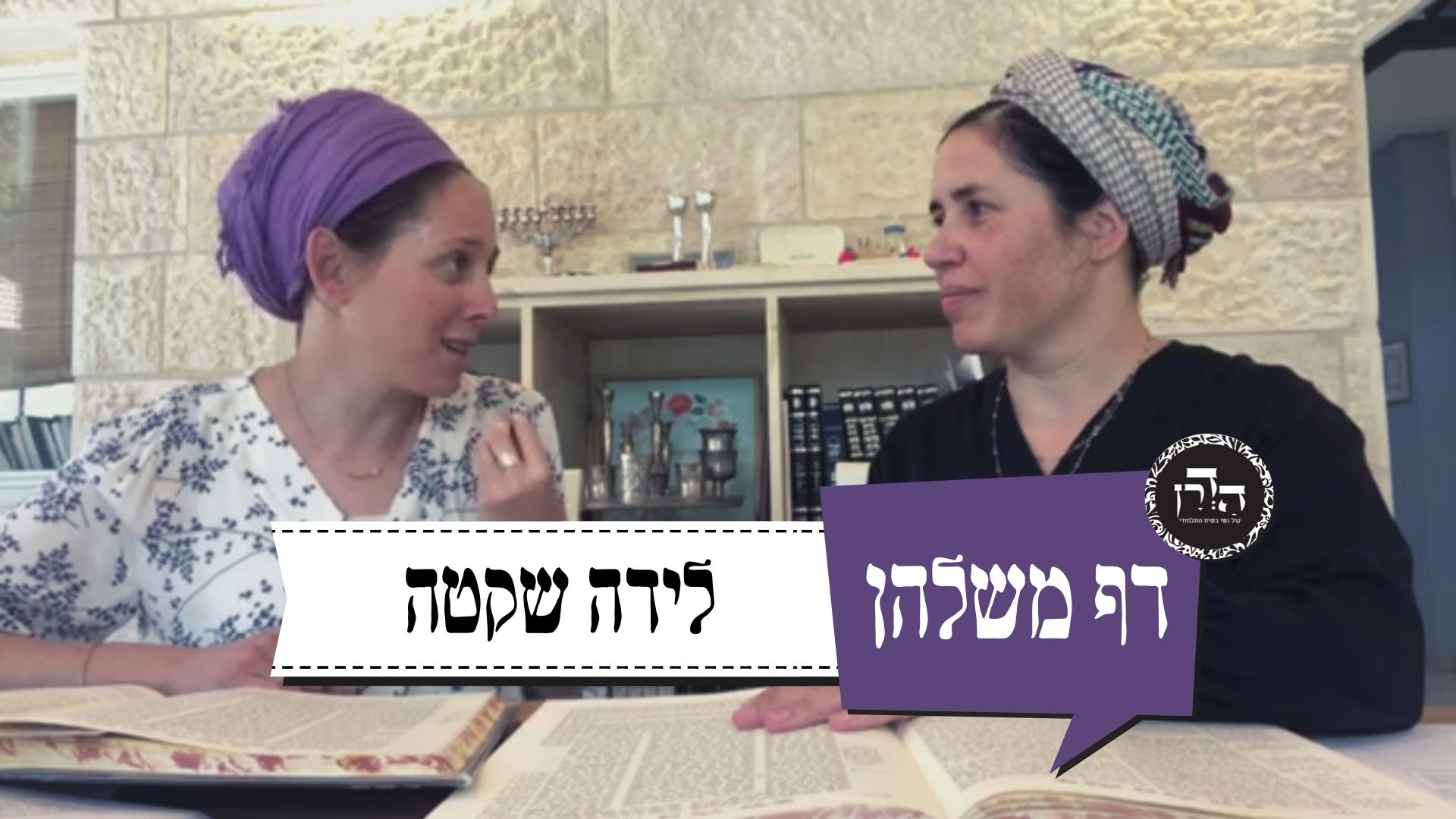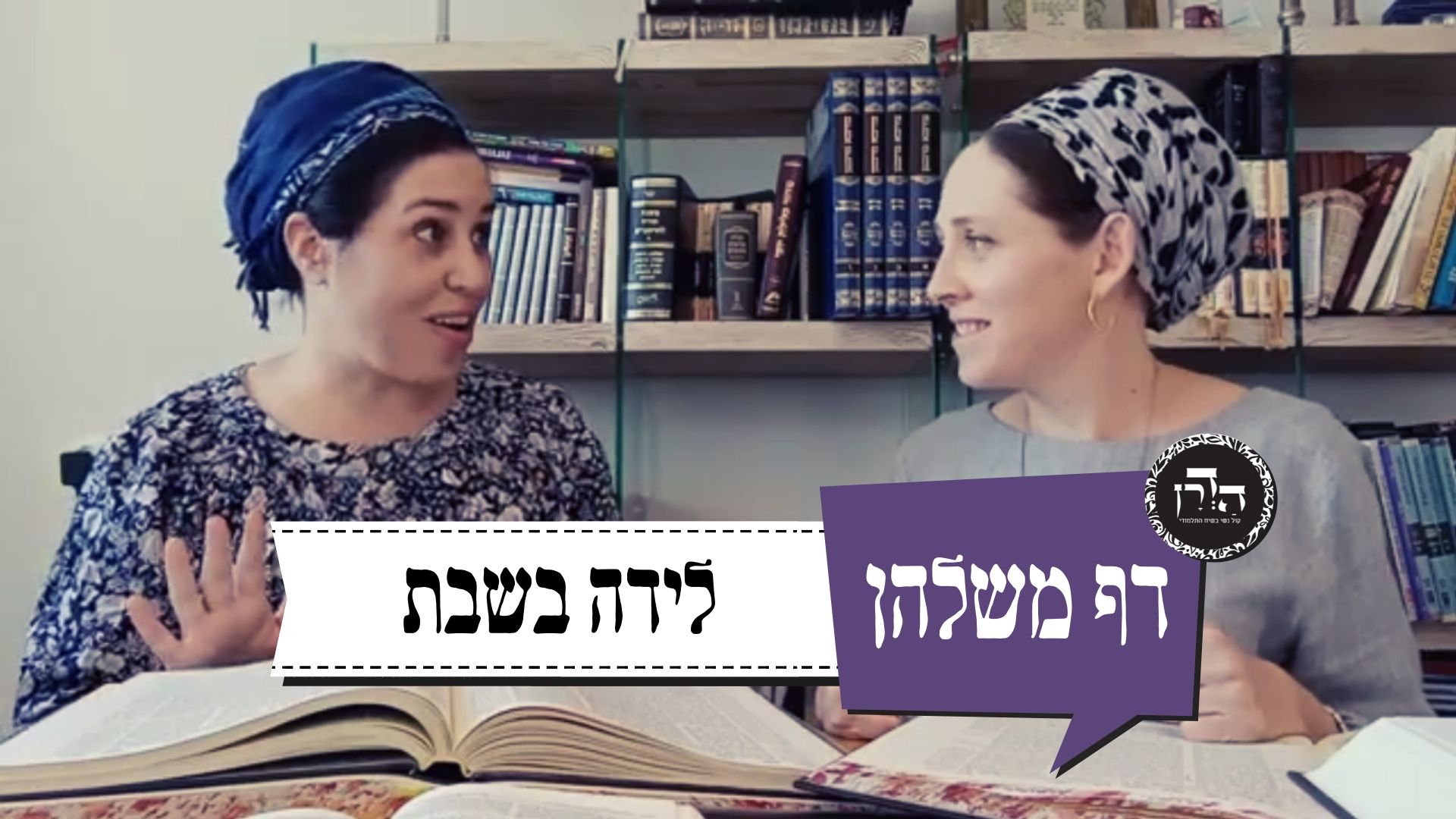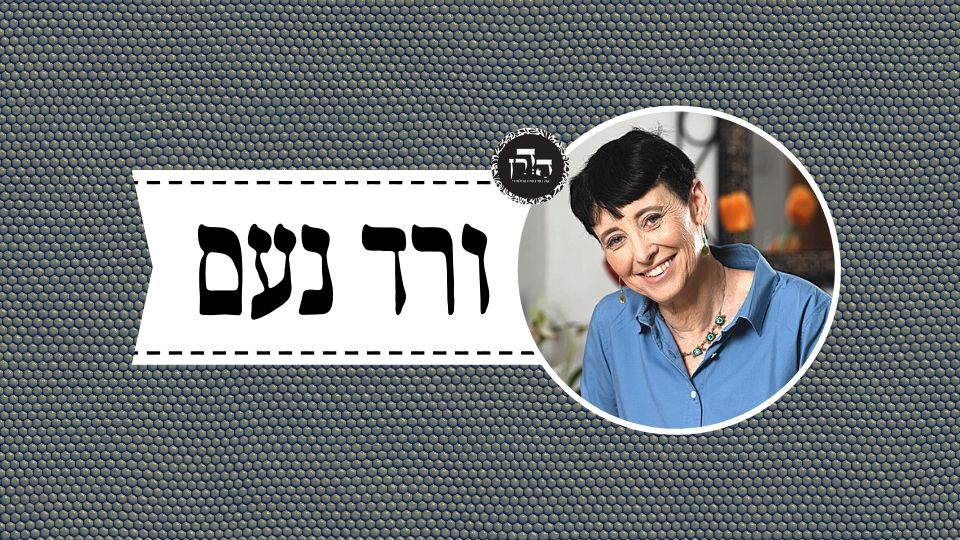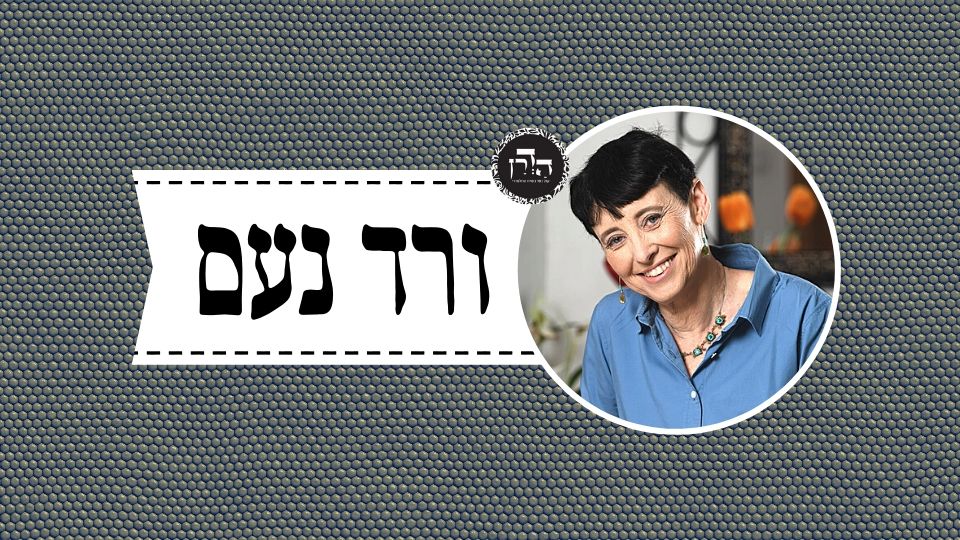הגמרא מביאה שלושה תירוצים לסתירה בין במשנה למשנה בכלים לגבי טבעת עם חותם – האם זה נחשב תכשיט לאשה או לא? עם איזה דברים אסור לאיש לצאת בשבת? למה אסרו סנדל המסומר? כנראה קשור לשעת גזירה ואירוע שקרה. הגמרא דנה בסנדלים שונים ומתירה אם עשוי לנוי או בכמה מקרים אחרים. למה?
הלימוד השבוע מוקדש ע”י רוברט ופאולה כהן לע”נ יוסף בן משה הכהן ז”ל. יוסף היה חזן שאהב מאוד לשיר, עבד קשה בחייו והיה מאוד מסור למשפחתו ולקהילה.
רוצה להקדיש שיעור?

כלים
הלימוד השבוע מוקדש ע”י רוברט ופאולה כהן לע”נ יוסף בן משה הכהן ז”ל. יוסף היה חזן שאהב מאוד לשיר, עבד קשה בחייו והיה מאוד מסור למשפחתו ולקהילה.
כלים
העמקה
רוצה להבין מה באמת קורה מתחת לפני השטח של הסוגיה?
שיעורים, פודקאסטים והרחבות של מיטב המורות שלנו יפתחו לך עוד זוויות וכיווני חשיבה.
חדשה בלימוד הגמרא?
זה הדף הראשון שלך? איזו התרגשות עצומה! יש לנו בדיוק את התכנים והכלים שיעזרו לך לעשות את הצעדים הראשונים ללמידה בקצב וברמה שלך, כך תוכלי להרגיש בנוח גם בתוך הסוגיות המורכבות ומאתגרות.
פסיפס הלומדות שלנו
גלי את קהילת הלומדות שלנו, מגוון נשים, רקעים וסיפורים. כולן חלק מתנועה ומסע מרגש ועוצמתי.
שבת ס
בְּקוֹלָב הַלֵּךְ אַחַר מַסְמְרוֹתָיו. בְּסוּלָּם הַלֵּךְ אַחַר שְׁלִיבוֹתָיו. בְּעַרְסָא הַלֵּךְ אַחַר שַׁלְשְׁלוֹתָיו. וַחֲכָמִים אוֹמְרִים: הַכֹּל הוֹלֵךְ אַחַר הַמַּעֲמִיד.
With a hanging board, follow its nails, upon which the objects hang. With a ladder, follow its rungs. With a large scale, follow its chains and not its baseplates. And the Rabbis say, with regard to all of these vessels, everything follows the support. The legal status of the object is not determined by the component of the vessel most significant in terms of function. It is determined by the component most significant in terms of structure. Therefore, according to Rabbi Neḥemya there is a distinction, even in the halakhot of Shabbat, between a ring with a seal and a ring without a seal, as in his opinion the seal constitutes the primary function of the ring. However, the Rabbis hold with regard to the halakhot of ritual impurity that the essential part of the ring is the ring itself, not the seal. Therefore, they permit going out into the public domain on Shabbat even with a ring that has a seal.
רָבָא אָמַר, לִצְדָדִים קָתָנֵי: יֵשׁ עָלֶיהָ חוֹתָם — תַּכְשִׁיט דְּאִישׁ, אֵין עָלֶיהָ חוֹתָם — תַּכְשִׁיט דְּאִשָּׁה.
Rava said: This contradiction can be resolved in another manner. The mishna dealing with the halakhot of ritual impurity taught with regard to the two types of rings disjunctively, i.e., referring to different circumstances: A ring that has a seal on it can become ritually impure because it is a man’s ornament; a ring that does not have a seal on it can become ritually impure because it is a woman’s ornament.
רַב נַחְמָן בַּר יִצְחָק אָמַר: טוּמְאָה אַשַּׁבָּת קָרָמֵית?! טוּמְאָה, ״כְּלִי מַעֲשֶׂה״ אֲמַר רַחֲמָנָא — וּכְלִי הוּא. שַׁבָּת, מִשּׁוּם מַשּׂוֹי אֲמַר רַחֲמָנָא, אֵין עָלֶיהָ חוֹתָם — תַּכְשִׁיט, יֵשׁ עָלֶיהָ חוֹתָם — מַשּׂוֹי.
Rav Naḥman bar Yitzḥak said an additional resolution to the contradiction between the mishnayot: Are you raising a contradiction from the halakhot of ritual impurity to the halakhot of Shabbat? The underlying principles of these areas of halakha are totally different. With regard to ritual impurity, the Torah stated: “All vessels with which labor is done” (Numbers 31:51), and a ring with a seal is a vessel and can therefore become ritually impure. However, with regard to Shabbat, the Torah stated that the prohibition is due to the fact that the object is a burden. Therefore, in a case where there is not a seal on it, it is an ornament and may be worn in the public domain. In a case where there is a seal on it, it is a burden and may not be worn.
וְלֹא בְּמַחַט שֶׁאֵינָהּ נְקוּבָה. לְמַאי חַזְיָא? אָמַר רַב יוֹסֵף: הוֹאִיל וְאִשָּׁה אוֹגֶרֶת בָּהּ שְׂעָרָהּ.
We also learned in the mishna: Nor with a needle that is not perforated. The Gemara asks: For what use is that type of needle suited? Rav Yosef said: Since a woman gathers her hair and pins it to her hairnet with the unperforated needle.
אֲמַר לֵיהּ אַבָּיֵי: וְתֶהֱוֵי כְּבִירִית טְהוֹרָה, וְתִשְׁתְּרֵי.
Abaye said to him: And if so, let the needle be like a ritually pure garter and consequently be permitted. There is a type of garter, a strap that ensures that a woman’s stockings will not fall, that cannot become ritually impure. A woman is permitted to go out into the public domain wearing it on Shabbat even if it is ornamented. For reasons of modesty, a woman will certainly not remove her garter or display it in the public domain. Similarly, with regard to the needle, the assumption is that a woman will not loosen her hair in the street.
אֶלָּא תַּרְגְּמַהּ רַב אַדָּא נַרְשָׁאָה קַמֵּיהּ דְּרַב יוֹסֵף: הוֹאִיל וְאִשָּׁה חוֹלֶקֶת בָּהּ שְׂעָרָהּ. בְּשַׁבָּת לְמַאי חַזְיָא? אָמַר רָבָא: טַס שֶׁל זָהָב יֵשׁ לָהּ עַל רֹאשָׁהּ. בַּחוֹל חוֹלֶקֶת בָּהּ שְׂעָרָהּ, בְּשַׁבָּת מַנִּיחָתָהּ כְּנֶגֶד פַּדַּחְתָּהּ.
Rather, Rav Adda from the city of Naresh explained before Rav Yosef: Since a woman parts her hair with it. The Gemara asks: On Shabbat, when it is prohibited to comb one’s hair, for what use is this needle suited? Rava said: There is a gold plate on the other end of the needle. On a weekday, she uses it to part her hair. On Shabbat, she inserts the needle into her head covering and lays the gold plate against her forehead for ornamental purposes.
מַתְנִי׳ לֹא יֵצֵא הָאִישׁ בְּסַנְדָּל הַמְסוּמָּר. וְלֹא בְּיָחִיד, בִּזְמַן שֶׁאֵין בְּרַגְלוֹ מַכָּה. וְלֹא בִּתְפִילִּין, וְלֹא בְּקָמֵיעַ בִּזְמַן שֶׁאֵינוֹ מִן הַמּוּמְחֶה. וְלֹא בְּשִׁרְיוֹן וְלֹא בְּקַסְדָּא וְלֹא בְּמַגָּפַיִים. וְאִם יָצָא — אֵינוֹ חַיָּיב חַטָּאת.
MISHNA: A man may not go out on Shabbat with a spiked sandal, as will be explained in the Gemara. And he may not go out with a single sandal when there is no wound on his foot. And he may neither go out with phylacteries, nor with an amulet when it is not from an expert, but rather it was written by someone who has not established a reputation as an expert in writing amulets that are effective for those who carry them. And he may neither go out with shiryon, nor with a kasda, nor with maggafayim. These terms will be explained in the Gemara. And if he went out into the public domain with any of these, he is not liable to bring a sin-offering.
גְּמָ׳ סַנְדָּל הַמְסוּמָּר מַאי טַעְמָא?
GEMARA: The Gemara asks: What is the reason that the Sages prohibited going out with a spiked sandal on Shabbat?
אָמַר שְׁמוּאֵל: שִׁלְפֵי הַשְּׁמָד הָיוּ, וְהָיוּ נֶחְבָּאִין בִּמְעָרָה, וְאָמְרוּ: הַנִּכְנָס — יִכָּנֵס, וְהַיּוֹצֵא — אַל יֵצֵא.
Shmuel said: They were those who eluded the decrees of religious persecution, and after one of the wars they were hiding in a cave. And those hiding said: One who seeks to enter the cave may enter, but one who seeks to leave the cave may not leave. One leaving has no way to determine whether or not the enemy is lying in wait outside the cave. Therefore, leaving could reveal the presence of those hiding in the cave.
נֶהְפַּךְ סַנְדָּלוֹ שֶׁל אֶחָד מֵהֶן, כִּסְבוּרִין הֵם אֶחָד מֵהֶן יָצָא וְרָאוּהוּ אוֹיְבִים וְעַכְשָׁו בָּאִין עֲלֵיהֶן. דָּחֲקוּ זֶה בָּזֶה וְהָרְגוּ זֶה אֶת זֶה יוֹתֵר מִמַּה שֶּׁהָרְגוּ בָּהֶם אוֹיְבִים.
It happened that the sandal of one of them was reversed, the front of the sandal was in the back, and his footprints appeared like the steps of one leaving the cave. They thought that one of them left and feared that their enemies saw him and were now coming upon them to attack. In their panic, they pushed one another and killed one another in greater numbers than their enemies had killed among them. To commemorate this disaster that resulted from a spiked sandal, they prohibited going out into the public domain with it.
רַבִּי אִילְעַאי בֶּן אֶלְעָזָר אוֹמֵר: בִּמְעָרָה הָיוּ יוֹשְׁבִין, וְשָׁמְעוּ קוֹל מֵעַל גַּבֵּי הַמְּעָרָה. כִּסְבוּרִין הָיוּ שֶׁבָּאוּ עֲלֵיהֶם אוֹיְבִים. דָּחֲקוּ זֶה בָּזֶה וְהָרְגוּ זֶה אֶת זֶה יוֹתֵר מִמַּה שֶּׁהָרְגוּ בָּהֶן אוֹיְבִים.
Rabbi Elai ben Elazar says that the reason for the decree was different. Once they were sitting in a cave and heard the sound of a spiked sandal atop the cave. They thought that their enemies had come upon them. They pushed one another and killed one another in greater numbers than their enemies had killed among them.
רָמֵי בַּר יְחֶזְקֵאל אָמַר: בְּבֵית הַכְּנֶסֶת הָיוּ יוֹשְׁבִין, וְשָׁמְעוּ קוֹל מֵאֲחוֹרֵי בֵּית הַכְּנֶסֶת. כִּסְבוּרִין הָיוּ שֶׁבָּאוּ עֲלֵיהֶם אוֹיְבִים. דָּחֲקוּ זֶה בָּזֶה וְהָרְגוּ זֶה אֶת זֶה יוֹתֵר מִמַּה שֶּׁהָרְגוּ בָּהֶן אוֹיְבִים.
Rami bar Yeḥezkel said that the reason for the decree was different. They were sitting in a synagogue and they heard the sound of a spiked sandal from behind the synagogue. They thought that their enemies had come upon them. They pushed one another, and killed one another in greater numbers than their enemies had killed among them.
בְּאוֹתָהּ שָׁעָה אָמְרוּ: אַל יֵצֵא אָדָם בְּסַנְדָּל הַמְסוּמָּר. אִי הָכִי, בְּחוֹל נָמֵי לִיתְּסַר! מַעֲשֶׂה כִּי הֲוָה — בְּשַׁבָּת הֲוָה. בְּיוֹם טוֹב לִישְׁתְּרֵי! אַלְּמָה תְּנַן:
To commemorate that disaster which occurred due to a spiked sandal, at that time they said: A person may not go out with a spiked sandal. The Gemara asks: If so, on a weekday it should also be prohibited. The Gemara answers: When this incident occurred, it was on Shabbat. Therefore, they issued the decree prohibiting the spiked sandal specifically in parallel circumstances. The Gemara challenges: If so, on a Festival wearing a spiked sandal should be permitted. Why, then, did we learn in the same mishna:
מְשַׁלְּחִין כֵּלִים בְּיוֹם טוֹב בֵּין תְּפוּרִין בֵּין שֶׁאֵינָן תְּפוּרִין — אֲבָל לֹא סַנְדָּל הַמְסוּמָּר וְלֹא מִנְעָל שֶׁאֵינוֹ תָּפוּר בְּיוֹם טוֹב!
One may send garments as a gift on a Festival, whether they are sewn or whether they are not sewn, because any object fit for any use on a Festival may be sent as a gift. However, one may neither send a spiked sandal nor an unsewn shoe on a Festival, since using them is prohibited. Apparently, one may not wear a spiked sandal on a Festival.
בְּשַׁבָּת מַאי טַעְמָא — דְּאִיכָּא כִּינּוּפְיָא, בְּיוֹם טוֹב נָמֵי אִיכָּא כִּינּוּפְיָא. תַּעֲנִית צִבּוּר אִיכָּא כִּינּוּפְיָא, לִיתְּסַר? מַעֲשֶׂה כִּי הֲוָה בְּכִינּוּפְיָא דְאִיסּוּרָא, הָכָא כִּינּוּפְיָא דְהֶתֵּירָא הֲוָה.
The Gemara explains: What is the reason that the Sages prohibited wearing a spiked sandal on Shabbat? It is because there is an assemblage of people. On a Festival too, there is an assemblage of people. The Gemara asks: On a communal fast day, there is an assemblage of people; wearing a spiked sandal should be prohibited then, as well. The Gemara answers: When this incident occurred, it was on a day when there was an assemblage of prohibition, i.e., a day on which performing labor is prohibited. Here, a fast day, is a day when there is an assemblage of permission, a day on which performing labor is permitted, and the two are not comparable. However, extending the scope of commemorative decrees to apply to comparable situations, e.g., from Shabbat to the Festivals, is acceptable.
וַאֲפִילּוּ לְרַבִּי חֲנִינָא בֶּן עֲקִיבָא, דְּאָמַר: לֹא אָסְרוּ אֶלָּא בְּיַרְדֵּן וּבִסְפִינָה וּכְמַעֲשֶׂה שֶׁהָיָה. הָנֵי מִילֵּי יַרְדֵּן דְּשָׁאנֵי מִשְּׁאָר נְהָרוֹת. אֲבָל יוֹם טוֹב וְשַׁבָּת כִּי הֲדָדֵי נִינְהוּ, דִּתְנַן: אֵין בֵּין יוֹם טוֹב לַשַּׁבָּת אֶלָּא אוֹכֶל נֶפֶשׁ בִּלְבַד.
And this is true even according to the opinion of Rabbi Ḥanina ben Akiva, who said in the following case that a decree issued due to a specific set of circumstances is applied only to those specific circumstances. The ashes of the red heifer were once transported across the Jordan River in a boat. A source of ritual impurity was discovered at the bottom of the boat. The Sages sought to issue a decree prohibiting transport of the ashes of the red heifer over any body of water, sea or river, over a bridge, or in a boat. Rabbi Ḥanina ben Akiva said that decrees that are issued due to a specific event apply only to precisely those circumstances. Therefore, he said: They only prohibited transporting the ashes of a red heifer in the Jordan River and in a boat, and like the incident that occurred. However, even according to this approach, which limits restriction, that applies only to the Jordan River and not to other rivers. This is because it is different from other rivers in several respects, e.g., width and depth. However, a Festival and Shabbat are similar to one another, as it was taught in the mishna: The halakhic difference between a Festival and Shabbat is only with regard to preparation of food.
אָמַר רַב יְהוּדָה אָמַר שְׁמוּאֵל: לֹא שָׁנוּ אֶלָּא לְחַזֵּק, אֲבָל לְנוֹי — מוּתָּר. וְכַמָּה לְנוֹי? רַבִּי יוֹחָנָן אָמַר: חָמֵשׁ בָּזֶה וְחָמֵשׁ בָּזֶה. וְרַבִּי חֲנִינָא אָמַר: שֶׁבַע בָּזֶה וְשֶׁבַע בָּזֶה.
Rav Yehuda said that Shmuel said: The Sages taught that a spiked sandal is prohibited only when the nails were placed in the sandal to strengthen its form; however, if they were placed in the sandal for beauty, it is permitted. The Gemara asks: And with how many nails is it considered to be for beauty? Rabbi Yoḥanan said: Five on this sandal and five on that one. And Rabbi Ḥanina said: Seven on this one and seven on that one.
אֲמַר לֵיהּ רַבִּי יוֹחָנָן לְרַב שֶׁמֶן בַּר אַבָּא, אַסְבְּרַהּ לָךְ: לְדִידִי, שְׁתַּיִם מִכָּאן וּשְׁתַּיִם מִכָּאן וְאַחַת בִּתְרֵסִיּוֹתָיו. לְרַבִּי חֲנִינָא, שָׁלֹשׁ מִכָּאן וְשָׁלֹשׁ מִכָּאן וְאַחַת בִּתְרֵסִיּוֹתָיו.
Rabbi Yoḥanan said to Rav Shemen bar Abba: I will explain it to you: According to my opinion, when inserting nails for beauty, two are inserted from here, its outer side, one near the toes and one near the heel, and two are inserted from there, its inner side, one near the toes and one near the heel, and one is inserted on its straps; and for Rabbi Ḥanina, three from here, and three from there, and one on its straps.
מֵיתִיבִי: סַנְדָּל הַנּוֹטֶה עוֹשֶׂה לוֹ שֶׁבַע, דִּבְרֵי רַבִּי נָתָן. וְרַבִּי מַתִּיר בִּשְׁלֹשׁ עֶשְׂרֵה.
The Gemara raises an objection from a baraita: For an uneven sandal, whose soles are not straight, one makes seven nails on the bottom to straighten it, and it is then permitted for use on Shabbat; that is the statement of Rabbi Natan. And Rabbi Yehuda HaNasi permits straightening the sandal with thirteen nails.
בִּשְׁלָמָא לְרַבִּי חֲנִינָא, הוּא דְּאָמַר כְּרַבִּי נָתָן. אֶלָּא רַבִּי יוֹחָנָן, דְּאָמַר כְּמַאן? הוּא דְּאָמַר כְּרַבִּי נְהוֹרַאי, דְּתַנְיָא: רַבִּי נְהוֹרַאי אוֹמֵר, חָמֵשׁ מוּתָּר וְשֶׁבַע אָסוּר.
The Gemara notes: Granted, according to Rabbi Ḥanina, there is no problem, as he stated his opinion in accordance with the opinion of Rabbi Natan. However, Rabbi Yoḥanan, in accordance with whose opinion did he state his opinion? Neither of the tanna’im agrees with his opinion. The Gemara answers: He stated his opinion in accordance with the opinion of Rabbi Nehorai, as it was taught in a baraita that Rabbi Nehorai says: With five nails inserted into the sole, it is permitted to go out into the public domain on Shabbat; and with seven nails, it is prohibited to go out into the public domain on Shabbat.
אֲמַר לֵיהּ אֵיפָה לְרַבָּה בַּר בַּר חַנָּה: אַתּוּן תַּלְמִידֵי רַבִּי יוֹחָנָן עֲבִידוּ כְּרַבִּי יוֹחָנָן, אֲנַן נַעֲבֵיד כְּרַבִּי חֲנִינָא.
The Sage, Ifa, said to Rabba bar bar Ḥana: You, who are students of Rabbi Yoḥanan, act in accordance with the opinion of Rabbi Yoḥanan. We will act in accordance with the opinion of Rabbi Ḥanina.
בְּעָא מִינֵּיהּ רַב הוּנָא מֵרַב אָשֵׁי: חָמֵשׁ מַהוּ? אֲמַר לֵיהּ: אֲפִילּוּ שֶׁבַע מֻתָּר. תֵּשַׁע מַאי? אֲמַר לֵיהּ: אֲפִילּוּ שְׁמוֹנֶה אָסוּר.
Rav Huna raised a dilemma before Rav Ashi: With a sandal that has five nails inserted into the sole, what is the halakha with regard to going out into the public domain? He said to him: Even with seven nails it is permitted. He asked further: With nine, what is the halakha? He said to him: Even with eight it is prohibited.
בְּעָא מִינֵּיהּ הָהוּא רַצְעָנָא מֵרַבִּי אַמֵּי: תְּפָרוֹ מִבִּפְנִים — מַהוּ? אֲמַר לֵיהּ: מוּתָּר, וְלָא יָדַעְנָא מַאי טַעְמָא.
That shoemaker raised a dilemma before Rabbi Ami: If one sewed the sole and attached it to the sandal from within, what is the halakha? May he go out into the public domain after inserting nails into it? Rabbi Ami said to him: It is permitted, and I do not know the reason.
אָמַר רַב אָשֵׁי: וְלָא יָדַע מָר מַאי טַעְמָא?! כֵּיוָן דִּתְפָרוֹ מִבִּפְנִים הָוֵי לֵיהּ מִנְעָל. בְּסַנְדָּל גְּזַרוּ בֵּיהּ רַבָּנַן, בְּמִנְעָל לָא גְזַרוּ בֵּיהּ רַבָּנַן.
Rav Ashi said: And does the Master not know the reason? It is obvious. Since he sewed it from within, it is no longer a sandal, it is a shoe. With regard to a sandal, the Sages issued a decree; with regard to a shoe, the Sages did not issue a decree.
בְּעָא מִינֵּיהּ רַבִּי אַבָּא בַּר זַבְדָּא מֵרַבִּי אַבָּא בַּר אֲבִינָא: עֲשָׂאוֹ כְּמִין כַּלְבּוֹס, מַהוּ? אֲמַר לֵיהּ: מוּתָּר. אִיתְּמַר נָמֵי, אָמַר רַבִּי יוֹסֵי בְּרַבִּי חֲנִינָא: עֲשָׂאוֹ כְּמִין כַּלְבּוֹס — מוּתָּר.
Rabbi Abba bar Zavda raised a dilemma before Rabbi Abba bar Avina: If he shaped the nail like tongs [kelavus] by bending a nail with two sharp ends and sticking both ends into the sandal, what is the halakha? May he go out into the public domain with it on Shabbat? He said to him: It is permitted. It was also stated that Rabbi Yosei, son of Rabbi Ḥanina, said: If he shaped it like tongs it is permitted.
אָמַר רַב שֵׁשֶׁת: חִיפָּהוּ כֻּלּוֹ בְּמַסְמְרוֹת כְּדֵי שֶׁלֹּא תְּהֵא קַרְקַע אוֹכַלְתּוֹ — מוּתָּר.
Rav Sheshet said: If he covered the entire sole in nails, so that contact with the ground will not wear it away, it is permitted to go out with that sandal on Shabbat, since it is no longer the spiked sandal with regard to which they issued a decree.
תַּנְיָא כְּווֹתֵיהּ דְּרַב שֵׁשֶׁת: לֹא יֵצֵא הָאִישׁ בְּסַנְדָּל הַמְסוּמָּר, וְלֹא יְטַיֵּיל מִבַּיִת לְבַיִת, אֲפִלּוּ מִמִּטָּה לְמִטָּה. אֲבָל מְטַלְטְלִין אוֹתוֹ לְכַסּוֹת בּוֹ אֶת הַכְּלִי וְלִסְמוֹךְ בּוֹ כַּרְעֵי הַמִּטָּה. וְרַבִּי אֶלְעָזָר בְּרַבִּי שִׁמְעוֹן אוֹסֵר. נָשְׁרוּ רוֹב מַסְמְרוֹתָיו וְנִשְׁתַּיְּירוּ בּוֹ אַרְבַּע אוֹ חָמֵשׁ — מוּתָּר. וְרַבִּי מַתִּיר עַד שֶׁבַע. חִיפָּהוּ בְּעוֹר מִלְּמַטָּה וְקָבַע לוֹ מַסְמְרוֹת מִלְּמַעְלָה — מוּתָּר. עֲשָׂאוֹ כְּמִין כַּלְבּוֹס אוֹ כְּמִין טַס אוֹ כְּמִין יָתֵד, אוֹ שֶׁחִיפָּהוּ כּוּלּוֹ בְּמַסְמְרוֹת כְּדֵי שֶׁלֹּא תְּהֵא קַרְקַע אוֹכַלְתּוֹ — מוּתָּר.
It was taught in the Tosefta in accordance with the opinion of Rav Sheshet: A man may not go out with a spiked sandal, and may not walk with it even from house to house within his courtyard, and may not even walk from bed to bed within his house. However, since the decree was issued with regard to circumstances identical to a specific incident, it only applies to wearing the sandal. Therefore, one may carry the sandal to cover a vessel with it and to support the legs of the bed with it. And Rabbi Elazar, son of Rabbi Shimon, prohibits using it for other purposes as well. If most of its nails fell out, and four or five remain in it, it is permitted to go out with it. And Rabbi Yehuda HaNasi permits going out into the public domain with the sandal, even if up to seven nails remain in it. If he covered it with leather from beneath the wood frame of the sandal and inserted nails into it from above, it is permitted. If he made the nail like a tong, or made one end flat like a platter [tas], or sharpened it like a peg, or covered it entirely with nails so that contact with the ground will not wear it away, it is permitted to go out with it.
הָא גּוּפַהּ קַשְׁיָא. אָמְרַתְּ נָשְׁרוּ רוֹב מַסְמְרוֹתָיו — אַף עַל גַּב דְּנִשְׁתַּיְּירוּ בֵּיהּ טוּבָא, וַהֲדַר תָּנֵי: אַרְבַּע אוֹ חָמֵשׁ — אִין, טְפֵי — לָא!
The Gemara analyzes the Tosefta cited in support of Rav Sheshet’s opinion. This Tosefta itself is difficult, as it is self-contradictory. On the one hand you said: If most of its nails fell out it is permitted; apparently, that is the halakha even though many nails remain in the sole. And, however, subsequently it was taught in the Tosefta, without specifying the number of nails that were there from the outset: With four or five nails, yes, going out is permitted; however, with more nails, no, it is prohibited.
אָמַר רַב שֵׁשֶׁת: לָא קַשְׁיָא — כָּאן שֶׁנִּגְמְמוּ, כָּאן שֶׁנֶּעֶקְרוּ.
Rav Sheshet said: This is not difficult, and it can be resolved as follows: Here, where it was permitted to go out wearing the sandal if the majority of nails fell out, it is referring to a case where they were broken, i.e., the heads of the nails were broken off while most of the nail remained embedded in the sole. In that case, it is clearly evident that most of the nails fell out. Here, where it was permitted only if four or five nails remain, it is referring to a case where they were totally removed and only the nails that remain in the shoe are visible.
אַרְבַּע אוֹ חָמֵשׁ מוּתָּר. הַשְׁתָּא חָמֵשׁ שְׁרֵי, אַרְבַּע מִיבַּעְיָא?! אָמַר רַב חִסְדָּא: אַרְבַּע מִסַּנְדָּל קָטָן, וְחָמֵשׁ מִסַּנְדָּל גָּדוֹל.
The Gemara continues its detailed analysis of the Tosefta: It was taught that if most of the nails in the sandal came out and only four or five nails remain, it is permitted to go out wearing it. The Gemara asks: Now, if it was mentioned that when five nails remain, going out is permitted, is it necessary to mention four? Rav Ḥisda said that the Tosefta means: If four nails remain from the nails in a small sandal, and if five nails remain from the nails in a large sandal, going out is permitted.
וְרַבִּי מַתִּיר עַד שֶׁבַע. וְהָתַנְיָא: רַבִּי מַתִּיר עַד שְׁלֹשׁ עֶשְׂרֵה! נוֹטֶה שָׁאנֵי.
It was taught in the Tosefta: And Rabbi Yehuda HaNasi permits up to seven. The Gemara asks: Wasn’t it taught in a baraita that for a sandal with an uneven sole, Rabbi Yehuda HaNasi permits up to thirteen? The Gemara answers: An uneven sole is different. Since the nails are inserted for the purpose of straightening the sole, it does not have the legal status of a spiked sandal.
הַשְׁתָּא דַּאֲתֵית לְהָכִי, לְרַבִּי יוֹחָנָן נָמֵי לָא קַשְׁיָא: נוֹטֶה שָׁאנֵי.
The Gemara notes: Now that you have arrived at this new explanation that a sandal with an uneven sole has a different legal status, for Rabbi Yoḥanan, who stated, contrary to the opinions of the tanna’im in this baraita, that the number of nails permitted in each sandal is five, this baraita is also not difficult. He could explain that a sandal with an uneven sole is different and requires additional nails. However, in the case of a sandal with an even sole, even the other tanna’im would not permit that many.
אָמַר רַב מַתְנָה, וְאָמְרִי לַהּ אָמַר רַב אַחָדְבוּי בַּר מַתְנָה אָמַר רַב מַתְנָה: אֵין הֲלָכָה כְּרַבִּי אֶלְעָזָר בְּרַבִּי שִׁמְעוֹן. פְּשִׁיטָא, יָחִיד וְרַבִּים הֲלָכָה כְּרַבִּים! מַהוּ דְּתֵימָא: מִסְתַּבְּרָא טַעְמָא דְּרַבִּי אֶלְעָזָר בְּרַבִּי שִׁמְעוֹן בְּהָא, קָא מַשְׁמַע לַן.
Rav Mattana said, and some say Rav Aḥadvoi bar Mattana said that Rav Mattana said: The halakha is not in accordance with the opinion of Rabbi Elazar, son of Rabbi Shimon, who completely prohibited moving a spiked sandal. The Gemara asks: That is obvious. Isn’t there a halakhic principle that in a dispute between an individual and the many, the halakha is in accordance with the opinion of the many? The Gemara answers: Lest you say that the rationale for the opinion of Rabbi Elazar, son of Rabbi Shimon, is more reasonable in this case, and therefore the halakha should be ruled in accordance with his opinion. Rav Mattana teaches us that that is not the halakha.
אָמַר רַבִּי חִיָּיא: אִי לָאו דְּקָרוּ לִי ״בַּבְלַאי שָׁרֵי אִיסּוּרֵי״ שָׁרֵינָא בֵּיהּ טוּבָא. וְכַמָּה? בְּפוּמְבְּדִיתָא אָמְרִין: עֶשְׂרִין וְאַרְבַּע. בְּסוּרָא אָמְרִין: עֶשְׂרִין וְתַרְתֵּין. אָמַר רַב נַחְמָן בַּר יִצְחָק, וְסִימָנָיךְ: עַד דַּאֲתָא מִפּוּמְבְּדִיתָא לְסוּרָא חֲסַר תַּרְתֵּי.
Rabbi Ḥiyya said: If not for the fact that they would call me: Babylonian who permits prohibitions, I would permit the insertion of many nails into a spiked sandal. The Gemara asks: And how many nails would he have permitted? In Pumbedita they said: Twenty-four nails. In Sura they said: Twenty-two. Rav Naḥman bar Yitzḥak said: And this is your mnemonic to remember which opinion was stated in Sura and which opinion was stated in Pumbedita: Until Rabbi Ḥiyya came from Pumbedita to Sura he lost two nails from his shoe. Since the route that Rabbi Ḥiyya took from Pumbedita to Eretz Yisrael passed through Sura, one could say: Due to the rigors of the journey, two nails fell from the sandal of Rabbi Ḥiyya between Pumbedita and Sura.
וְלֹא בְּיָחִיד בִּזְמַן שֶׁאֵין בְּרַגְלוֹ מַכָּה.
It was taught in the mishna: And he may not go out with a single sandal when there is no wound on his foot.
